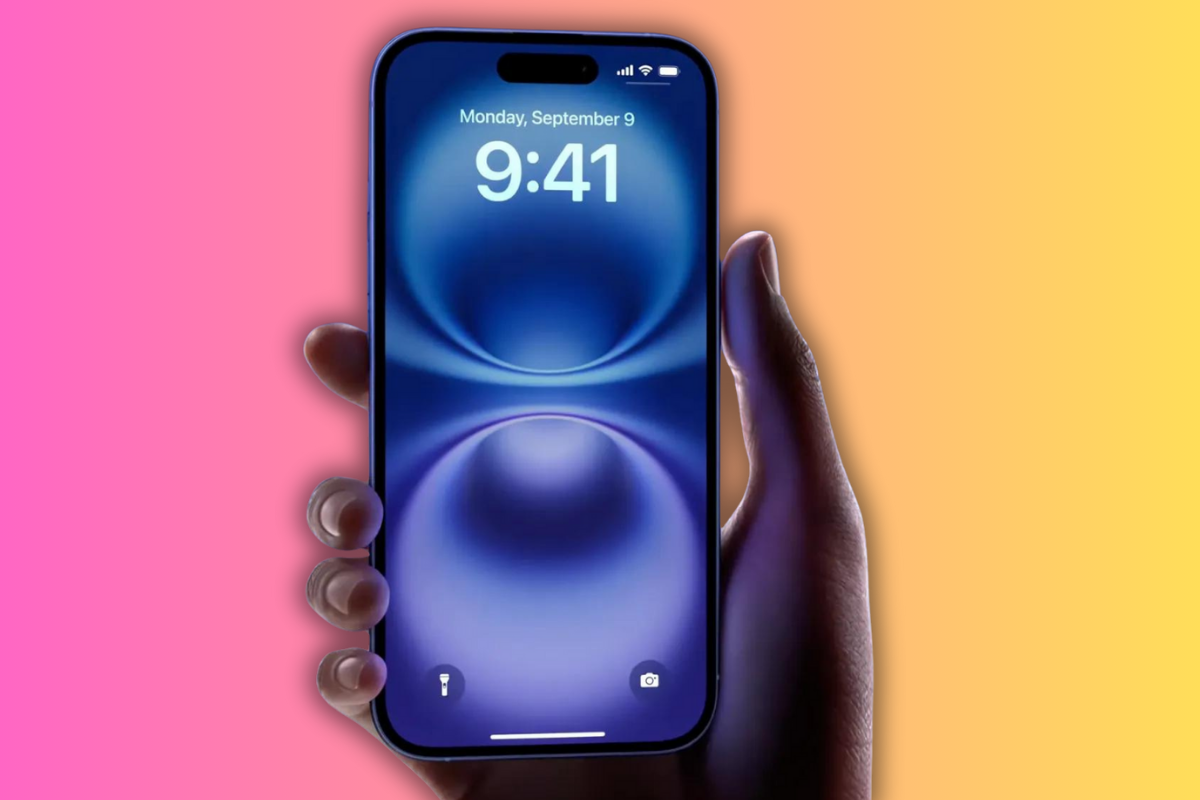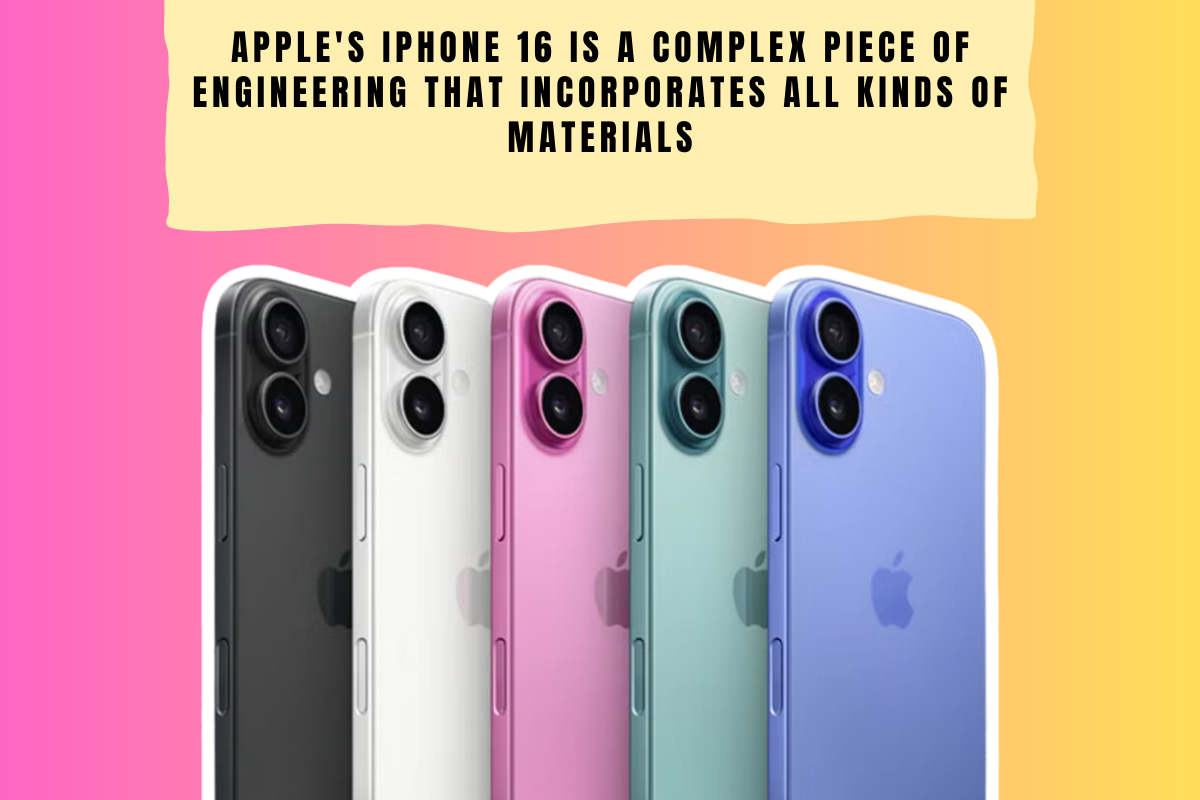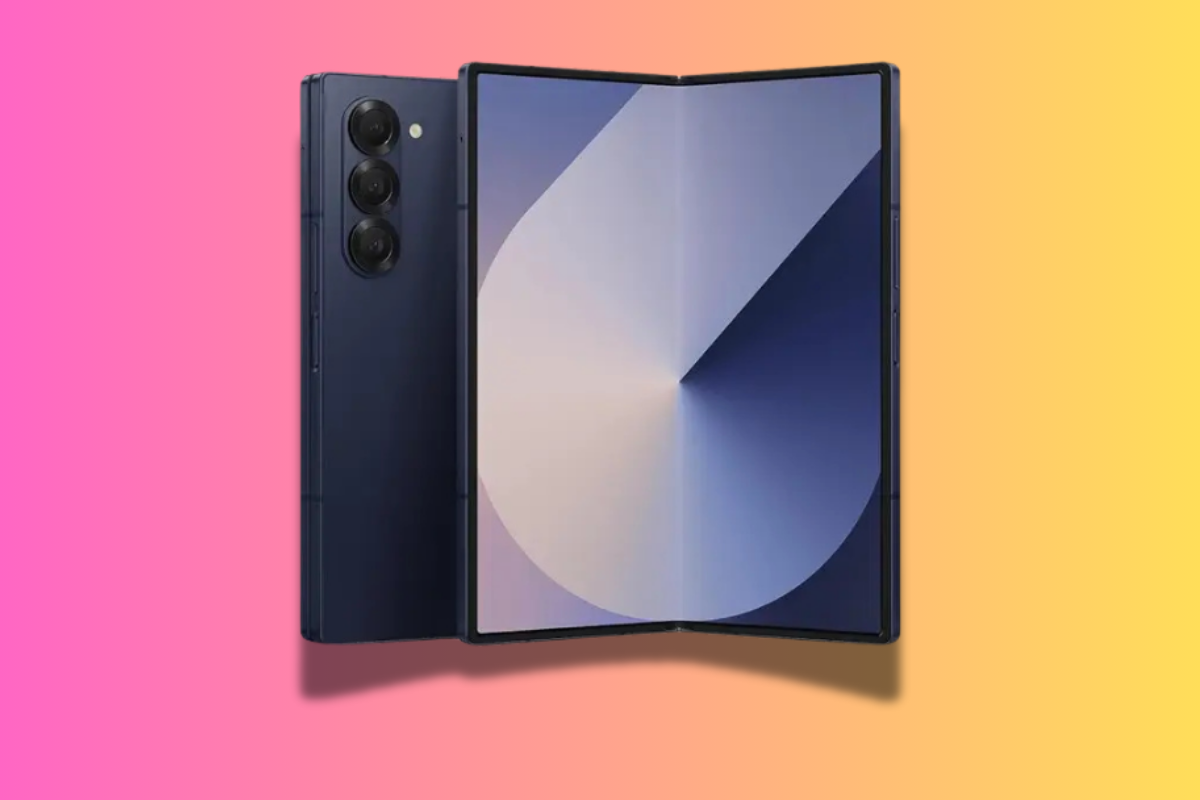Apple’s iPhone 16 is a complex piece of engineering that incorporates all kinds of materials. Here’s a completely breakdown of what it’s made from…
TL;DR – Here’s ALL The Materials Used To Make An iPhone 16…
- 📦 Eco-Friendly Packaging – Packaging is 100% fiber-based, with 66% recycled content for a greener footprint.
- 📱 Titanium Frame – iPhone 16 Pro and Pro Max are built with a lightweight titanium exterior for durability and a premium feel.
- 🛡️ Ceramic Shield Front – The screen is protected by Apple’s Ceramic Shield for better shatter and scratch resistance.
- 🔲 Matte Glass Back – A textured matte glass back adds style and is resistant to fingerprints and smudges.
- ♻️ 100% Recycled Aluminum – The internal frame and thermal structure are made from fully recycled aluminum, providing strength and sustainability.
- 🔋 Eco-Friendly Battery – Battery includes 100% recycled cobalt and over 95% recycled lithium, a first for Apple’s sustainability goals.
- 📸 Recycled Gold in Cameras – All camera modules and control components use 100% recycled gold wire, reducing environmental impact.
- 🔧 Recycled PCBs – Circuit boards are made with 100% recycled gold, copper, and tin, plus recycled copper in the inductive charger.
- 💪 Taptic Engine – Built with 100% recycled tungsten and copper, making it durable and eco-friendly.
- 🧲 Recycled Rare Earth Magnets – All magnets are made from 100% recycled rare earth elements for improved sustainability.
- 🧩 Steel & Plastic – 80% recycled steel in multiple parts and 50% recycled plastic in 14 components.
iPhones are complex things. From the drawing board to production, there’s a billion and one things to consider. But the most important? The materials used to create its chassis and internal components.
Now, most people just assume their phones are made from a combination of plastics and aluminum and other metals. But this isn’t the case – there’s a myriad of other, exotic materials used.
And then there’s the environmental impact of mass producing iPhones. Apple has gone to extreme lengths over the past few years to make its iPhone production less carbon-intensive by utilising recycled materials and components.
From titanium to recycled cobalt, here’s an in-depth look at what goes into the making the iPhone 16 series…
What is The iPhone 16 Made From? All The Materials Used In Its Construction…

iPhone 16 Sustainability Scorecard
Eco-Friendly Packaging
Packaging is 100% fiber-based, with 66% recycled content for a greener footprint.
Titanium Frame
iPhone 16 Pro and Pro Max are built with a lightweight titanium exterior for durability and a premium feel.
Ceramic Shield Front
The screen is protected by Apple’s Ceramic Shield for better shatter and scratch resistance.
Matte Glass Back
A textured matte glass back adds style and is resistant to fingerprints and smudges.
100% Recycled Aluminum
The internal frame and thermal structure are made from fully recycled aluminum, providing strength and sustainability.
Eco-Friendly Battery
Battery includes 100% recycled cobalt and over 95% recycled lithium, a first for Apple’s sustainability goals.
Recycled Gold in Cameras
All camera modules and control components use 100% recycled gold wire, reducing environmental impact.
Recycled PCBs
Circuit boards are made with 100% recycled gold, copper, and tin, plus recycled copper in the inductive charger.
Taptic Engine
Built with 100% recycled tungsten and copper, making it durable and eco-friendly.
Recycled Rare Earth Magnets
All magnets are made from 100% recycled rare earth elements for improved sustainability.
Steel & Plastic
80% recycled steel in multiple parts and 50% recycled plastic in 14 components.
iPhone 16 Build Materials Explained: All The Exotic & Rare Earth Minerals Used To Make It

Titanium Design: The Pro Difference
Apple has switched up its game this year with the iPhone 16 Pro and Pro Max by crafting their exteriors with titanium, which brings several benefits. Titanium is known for being lightweight yet incredibly strong, making it a perfect match for a phone that’s built to withstand daily wear and tear.
This move not only makes the Pro models feel more durable but also gives them a polished, industrial look that feels premium in your hand.
Ceramic Shield: Built for Durability
For screen protection, the iPhone 16 Pro models feature Apple’s Ceramic Shield on the front. This is Apple’s latest iteration of screen protection, designed to be tough against accidental drops and scratches.
Ceramic Shield is made by embedding nano-ceramic crystals within the glass, providing excellent shatter resistance.
Apple claims that this gives it superior toughness compared to other smartphone glass types, which means fewer screen repairs and a longer-lasting display.
Textured Matte Glass
Flip the phone over, and you’ll see the textured matte glass back that not only looks great but is resistant to fingerprints and smudges. The matte finish also adds a tactile feel that’s pleasing to hold, making it less slippery.
This design choice blends aesthetics and practicality, giving the iPhone 16 Pro a unique visual style while maintaining durability.
Recycled Aluminum: Inside the Frame
The iPhone 16 Pro models use 100% recycled aluminum for their internal structural frame and thermal substructure.
Aluminum is lightweight yet sturdy, perfect for providing a robust inner framework.
Apple’s choice to use recycled aluminum shows its commitment to reducing environmental impact without compromising the phone’s integrity or performance.
Battery: Built With Sustainability in Mind
The battery in the iPhone 16 Pro takes Apple’s sustainable approach even further. It incorporates 100% recycled cobalt and over 95% recycled lithium.
This is a major step in Apple’s journey towards using more sustainable materials, marking the highest percentage of recycled lithium in any of its batteries to date.
By using these recycled materials, Apple reduces reliance on mining and the ecological impact associated with extracting fresh resources.
Cameras and Camera Control: A Touch of Gold
The iPhone 16 Pro’s advanced camera system doesn’t just excel in photo quality; it also uses 100% recycled gold in its construction.
Both the cameras and their control modules are built with gold wire that’s fully recycled, which helps reduce environmental impact.
This approach extends to the USB-C connector and other small parts, integrating recycled gold plating across various components.
Printed Circuit Boards: Gold, Copper, and Tin
The iPhone 16’s printed circuit boards (PCBs) contain a host of recycled materials. Here’s how it all breaks down:
- 100% recycled gold in the plating.
- 100% recycled copper for multiple layers, including the inductive charger.
- 100% recycled tin in the solder used across multiple PCBs.
These materials help reduce the carbon footprint associated with manufacturing, ensuring that even the smallest components are sustainably sourced.
Taptic Engine: Recycled Tungsten and Copper
Apple’s Taptic Engine – responsible for those satisfying vibrations – is also constructed with 100% recycled tungsten and copper wire. Tungsten is known for its durability, making it ideal for components that face repetitive stress.
Direct recycling of tungsten is a cost-effective process, requiring minimal energy and producing less chemical waste than traditional methods. For specific tungsten grades, like WC-Co and WC-TiC-Ta(Nb)C-Co, the zinc process used in recycling can be 20-35% cheaper compared to indirect conversion methods, making it both a green and cost-saving choice.
From an environmental perspective, recycling tungsten also cuts down on the pollution and waste tied to mining fresh tungsten ore. By using recycled materials, Apple aligns with the industry-wide push toward more sustainable practices and boosts global recycling rates.
Since tungsten is a rare and costly material, recycling conserves this finite resource and reduces reliance on mining, which helps ensure that future technology can continue benefiting from this durable metal without the environmental costs.
Recycled Rare Earth Elements in Magnets
Magnets play a big role in the iPhone 16 Pro, especially in features like MagSafe and the Taptic Engine.
Apple has ensured that all magnets in the iPhone 16 Pro models are made from 100% recycled rare earth elements.
Rare earth elements are essential for strong magnets, but they are often sourced in environmentally harmful ways, so this recycling initiative is a big win for sustainability.
Recycled Steel and Plastic: Going Beyond the Surface
Apple has extended its recycling efforts to many of the iPhone 16’s small parts as well.
- 80% recycled steel is used in various internal components, like the Taptic Engine, speaker, and display support plate.
- 50% recycled plastic is incorporated into at least 14 different components.
These materials not only help reduce Apple’s environmental footprint but also add to the overall durability of the device.
Packaging: 100% Fibre-Based, with a Green Twist
Apple’s commitment to sustainability doesn’t end with the phone itself. The packaging for the iPhone 16 is 100% fiber-based and made with 66% recycled content.
By removing plastic and using mostly recycled fibers, Apple minimizes waste and provides eco-friendly packaging to align with their environmental goals.
E-waste is still a massive issue though and no amount of recycled material is going to change that. If you’re interested in NOT contributing to more e-waste, considering buying a refurbished iPhone instead of a new one. If everybody did this (or Apple switched to a three year hardware cycle for its iPhone) the environmental impact would be hugely positive.
There is a silver-lining here, though, and it relates to iPhone 16 demand: it’s lower than expected. And analysts believe this is because people (myself included) are holding onto their iPhones for longer. On a macro scale, this trend, while not good for Apple’s bottom line, is great for the environment.

Latest iPhone 16 Guides
Learn more about this iPhone 16, iPhone 16 Plus, iPhone 16 Pro and the iPhone 16 Pro Max…




